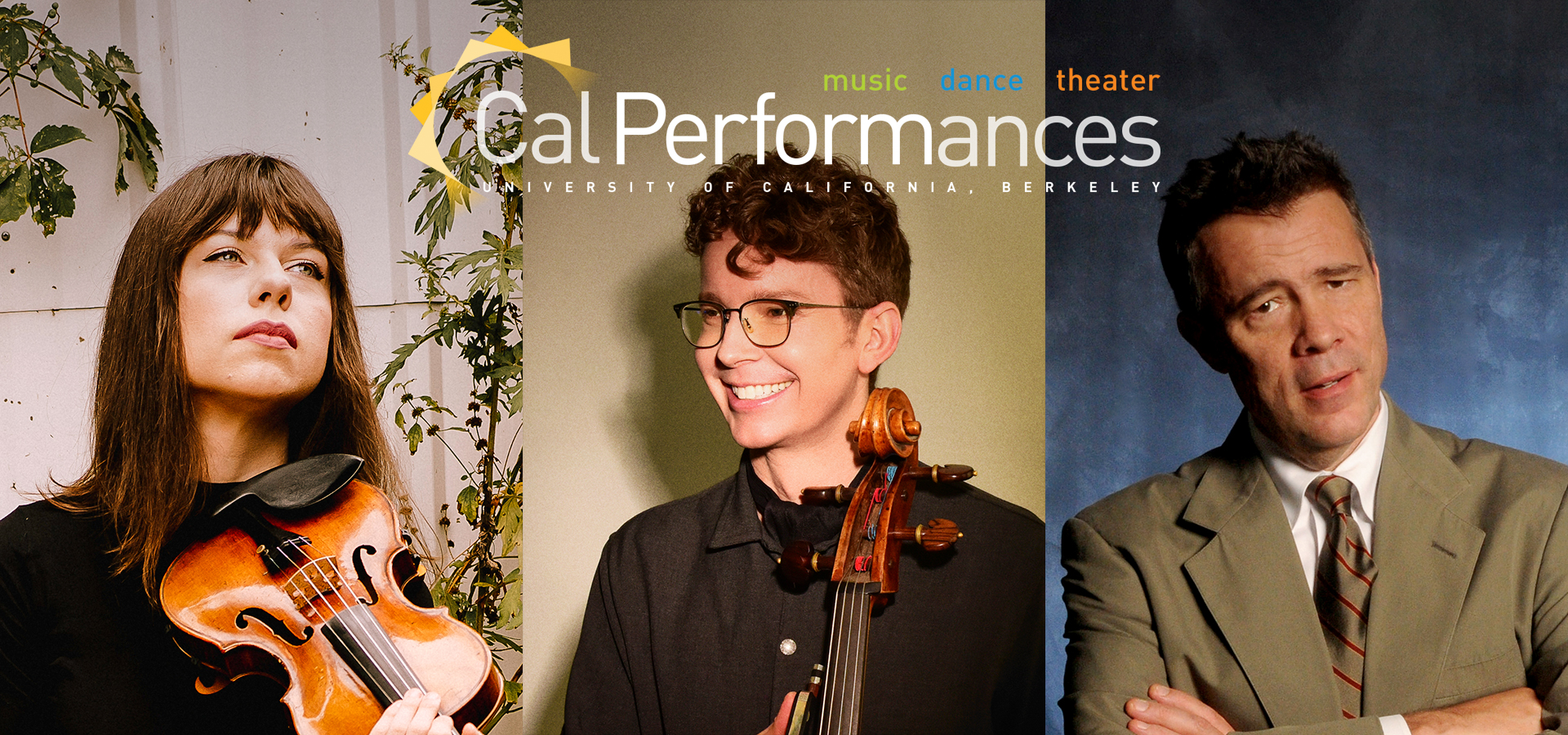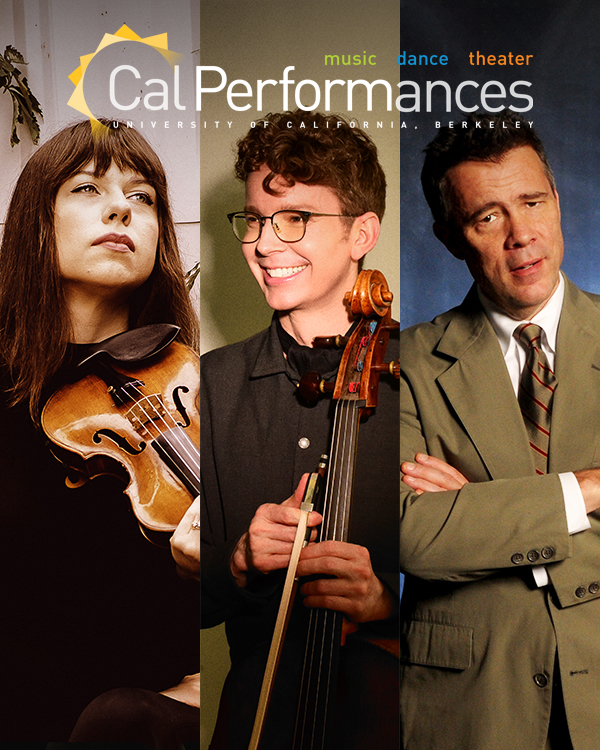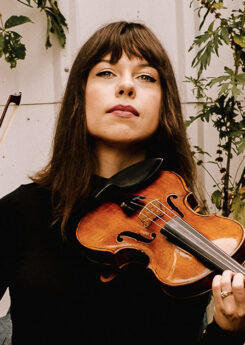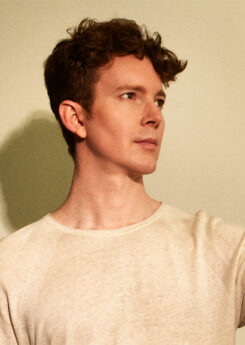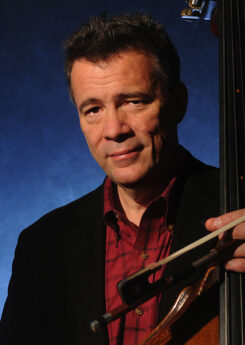Tessa Lark, violin
Joshua Roman, cello
Edgar Meyer, double bass
Sunday, October 20, 2024, 3pm
Hertz Hall
Leadership support for this performance is provided by Nadine Tang.
This performance is made possible, in part, by Dr. Rupali Das-Melnyk and Dr. Ostap Melnyk.
From the Executive and Artistic Director
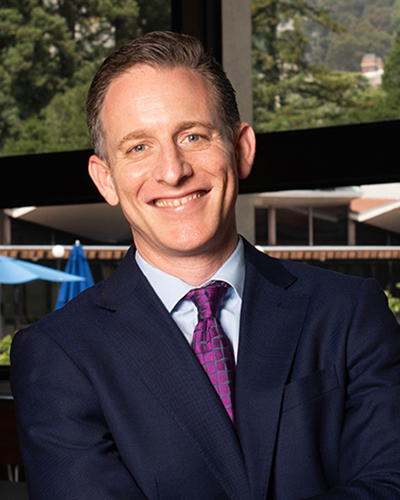
Welcome to the start of an exciting new season at Cal Performances! Over the coming year, we’ll spotlight fresh perspectives, captivating stories, and brilliant talent in presentations that will expand the boundaries of the performing arts and inspire us to engage more deeply with the world around us.
It is a singular pleasure to begin our season with a visit from the American Modern Opera Company (also known as AMOC*), which will present its rich and wonderful new production of Olivier Messiaen’s 1945 song cycle Harawi (Sept 27, Zellerbach Hall [ZH]). Among today’s most ambitious and important performance collectives, AMOC* is renowned for presenting some of the most significant interdisciplinary art on the international scene. The company’s landmark production of Harawi features the accomplished classical singer Julia Bullock—who also serves as our artist in residence over the course of the 2024–25 season (see Thomas May’s informative article beginning on the next page)—and pianist Conor Hanick in a production that is expanded and enhanced through the work of choreographers/dancers Bobbi Jene Smith and Or Schraiber, all under the direction of Zack Winokur. (All five artists are among the 17 sought-after composers, choreographers, directors, vocalists, instrumentalists, dancers, writers, and designers who form AMOC*, and all are united by a commitment to collaborative authorship and maintaining important ongoing relationships with other creators.)
And there’s so much more to see this season! I encourage you to visit our website and check out the special interactive season brochure that has been designed to provide the best possible online reading experience; this dynamic new online tool has also been configured to map perfectly to your device, whether it’s desktop, laptop, or mobile.
As you explore the calendar, I recommend you give particular attention to our 2024–25 Illuminations theme of “Fractured History,” which will introduce nuanced accounts and powerful new voices to enrich our understanding of the past and explore how our notions of history affect our present and future.
As part of our Illuminations thematic programming this season, a major highlight will be the welcome return of the multitalented South African artist William Kentridge, with the Bay Area premiere of his mind-expanding new chamber opera, The Great Yes, The Great No (March 14–16, ZH). (Berkeley audiences will fondly recall Kentridge’s remarkable SIBYL from March 2023, in addition to the many other performances and events that were part of his residency that season.)
I’m also delighted to recognize the Maria Manetti Shrem and Elizabeth Segerstrom California Orchestra Residency, which will host three special performances with one of the towering artistic institutions of our time, the peerless Vienna Philharmonic, under preeminent conductor Yannick Nézet-Séguin (March 5–7, ZH) and joined by pianist Yefim Bronfman on March 7.
And finally, I’d be remiss if I didn’t mention our outstanding dance season, which is distinguished by Twyla Tharp Dance’s 60th anniversary Diamond Jubilee (Feb 7–9, ZH), toasting the artistic output that has easily made Tharp one of today’s most celebrated choreographers; as well as the Cal Performances debut of the world-renowned Brazilian troupe Grupo Corpo (Apr 25–26, ZH).
I look forward to engaging with so many fresh artistic perspectives alongside you throughout the season. Together, we will witness how these experiences can move each one of us in the profound and unpredictable ways made possible only by the live performing arts.
Jeremy Geffen
Executive and Artistic Director, Cal Performances
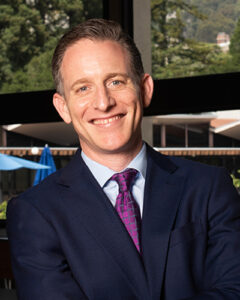 Welcome to the start of an exciting new season at Cal Performances! Over the coming year, we’ll spotlight fresh perspectives, captivating stories, and brilliant talent in presentations that will expand the boundaries of the performing arts and inspire us to engage more deeply with the world around us.
Welcome to the start of an exciting new season at Cal Performances! Over the coming year, we’ll spotlight fresh perspectives, captivating stories, and brilliant talent in presentations that will expand the boundaries of the performing arts and inspire us to engage more deeply with the world around us.
It is a singular pleasure to begin our season with a visit from the American Modern Opera Company (also known as AMOC*), which will present its rich and wonderful new production of Olivier Messiaen’s 1945 song cycle Harawi (Sept 27, Zellerbach Hall [ZH]).
Among today’s most ambitious and important performance collectives, AMOC* is renowned for presenting some of the most significant interdisciplinary art on the international scene. The company’s landmark production of Harawi features the accomplished classical singer Julia Bullock—who also serves as our artist in residence over the course of the 2024–25 season (see Thomas May’s informative article beginning on the next page)—and pianist Conor Hanick in a production that is expanded and enhanced through the work of choreographers/dancers Bobbi Jene Smith and Or Schraiber, all under the direction of Zack Winokur. (All five artists are among the 17 sought-after composers, choreographers, directors, vocalists, instrumentalists, dancers, writers, and designers who form AMOC*, and all are united by a commitment to collaborative authorship and maintaining important ongoing relationships with other creators.)
And there’s so much more to see this season! I encourage you to visit our website and check out the special interactive season brochure that has been designed to provide the best possible online reading experience; this dynamic new online tool has also been configured to map perfectly to your device, whether it’s desktop, laptop, or mobile.
As you explore the calendar, I recommend you give particular attention to our 2024–25 Illuminations theme of “Fractured History,” which will introduce nuanced accounts and powerful new voices to enrich our understanding of the past and explore how our notions of history affect our present and future.
As part of our Illuminations thematic programming this season, a major highlight will be the welcome return of the multitalented South African artist William Kentridge, with the Bay Area premiere of his mind-expanding new chamber opera, The Great Yes, The Great No (March 14–16, ZH). (Berkeley audiences will fondly recall Kentridge’s remarkable SIBYL from March 2023, in addition to the many other performances and events that were part of his residency that season.)
I’m also delighted to recognize the Maria Manetti Shrem and Elizabeth Segerstrom California Orchestra Residency, which will host three special performances with one of the towering artistic institutions of our time, the peerless Vienna Philharmonic, under preeminent conductor Yannick Nézet-Séguin (March 5–7, ZH) and joined by pianist Yefim Bronfman on March 7.
And finally, I’d be remiss if I didn’t mention our outstanding dance season, which is distinguished by Twyla Tharp Dance’s 60th anniversary Diamond Jubilee (Feb 7–9, ZH), toasting the artistic output that has easily made Tharp one of today’s most celebrated choreographers; as well as the Cal Performances debut of the world-renowned Brazilian troupe Grupo Corpo (Apr 25–26, ZH).
I look forward to engaging with so many fresh artistic perspectives alongside you throughout the season. Together, we will witness how these experiences can move each one of us in the profound and unpredictable ways made possible only by the live performing arts.
Jeremy Geffen
Executive and Artistic Director, Cal Performances
About the Performance
Johann Sebastian Bach
Sonata for Viola da Gamba in G major, BWV 1027
In 1713, the frugal Friedrich Wilhelm I of Prussia dismissed his household musical establishment in Berlin. The young, cultured Prince Leopold of Anhalt-Cöthen, north of Leipzig, took the opportunity to engage some of the finest of Friedrich’s musicians, and he provided them with excellent instruments and established a music library for their regular court performances. In December 1717, Leopold hired Johann Sebastian Bach, then organist and Kapellmeister at the court of Weimar, as his director of music. Inspired by the high quality of the musicians in his charge and by the Prince’s praise of his creative work, Bach produced much of his greatest instrumental music during the six years of his tenure at Cöthen: the Brandenburg Concertos; suites for orchestra; violin concertos; The Well-Tempered Clavier; many chamber pieces; and the sonatas, suites and partitas for solo strings with and without accompaniment.
Bach’s three sonatas for viola da gamba and harpsichord quite likely also date from his tenure at Cöthen, when they could have been written for the virtuoso Christian Ferdinand Abel, who had joined Leopold’s musical establishment around 1715 and become a close friend of Bach when he arrived two years later; Bach stood as godfather to Abel’s first daughter in 1720. The Prince was himself a gambist of some accomplishment (Bach wrote one of the gamba parts in the sixth Brandenburg for him), and may even have tried out his Kapellmeister’s challenging sonatas for himself. The dating to Cöthen, however, is not fully settled, since the manuscript sources from which the sonatas are known today originated around 1740. Some scholars therefore conjecture that they were composed not for Christian Ferdinand Abel but for his son Carl Friedrich, also a gifted gambist, who came to Leipzig to study with Bach after his father’s death in 1737. (In the 1760s, Carl Friedrich became a partner with Bach’s youngest son, Johann Christian, in an important concert venture in London.)
The six-string, slope-shouldered, silver-voiced viola da gamba, a hold-over from the old Renaissance viol family, was losing favor during Bach’s lifetime because of the wide adoption of the cello, first given its modern configuration around 1560 by the Cremonese craftsman Andrea Amati. The instrument gained its name because it was supported between the knees (“gamba” is Italian for “leg”) so as not to touch the floor, and it was used, generally, to carry the bass line in ensemble works, and, occasionally, to act as soloist. Bach was the last important composer to write for the viola da gamba, featuring it in the Brandenburg Concerto No. 6, St. Matthew and St. John Passions, and several cantatas. Its music is often played today on the modern cello. Though the gamba is now relegated to the performance of early music, the modern double bass, with its tuning in fourths and its sloping shape—compare its profile with the square shoulders of the other orchestral strings—is a flourishing descendent of the noble viol family.
As with every genre he took up, Bach brought the development of the Baroque duo sonata to its zenith with his sonatas for melody instrument and keyboard. The twin forms of the sonata—for solo instrument with keyboard accompaniment (optionally doubled by a bass instrument) and for two treble instruments with the same supporting players—had gestated in Italy early in the preceding century, and been nurtured into mature musical genres by Arcangelo Corelli in the first five sets of his published works. The solo and trio sonatas were further categorized according to use and style as either sonata da chiesa (“church sonata,” serious in expression and contrapuntal in texture) or sonata da camera (“chamber sonata,” lighter in mood and dance-like in idiom). Bach’s most important technical contribution to the duo sonata was in fully notating the keyboard part rather than just indicating the customary chord symbols below the bass notes, which the player had to realize at his discretion. This specificity allowed Bach to raise the keyboard from its role as accompanist to that of equal partner by using the right hand to play an independent melodic line, so that his examples of the form exhibit a richness of texture approaching that of the trio sonata. (In this arrangement, violin plays the original gamba line and the two hands of the keyboard are shared between cello and bass.)
The Sonata in G major is Bach’s adaptation of his Sonata for Two Flutes and Basso Continuo in G major, BWV 1039; the first flute part was assigned to the right hand of the keyboard, and the gamba given the second flute part, transposed down an octave. The sonata follows the structure and style of the sonata da chiesa—four movements (slow–fast–slow–fast), largely contrapuntal in texture and serious in nature: a pastoral Adagio, an intimately conversational Allegro, an introspective Andante, and a brilliant closing Allegro.
— © 2024 Dr. Richard E. Rodda
A Note from Edgar Meyer
In 1986-1988, I wrote a series of three string trios that I premiered with Daniel Phillips and Carter Brey at the Santa Fe Chamber Music Festival. These were the first longer pieces that I had conceived as such, and they set the tone for my next four decades. Only one was partially recorded. After meeting Tessa Lark and Joshua Roman a few years ago, I realized that they were perfect for helping me document this personal milestone. I also have set out to write a new trio for us to “complete the thought.” Following the tour, we will record the old trios and the new one as a set. Tonight, we will be performing both the 1986 and 1988 trios, the new trio, and we will open the concert with the Bach Gamba Sonata, BWV 1027.
—Edgar Meyer


